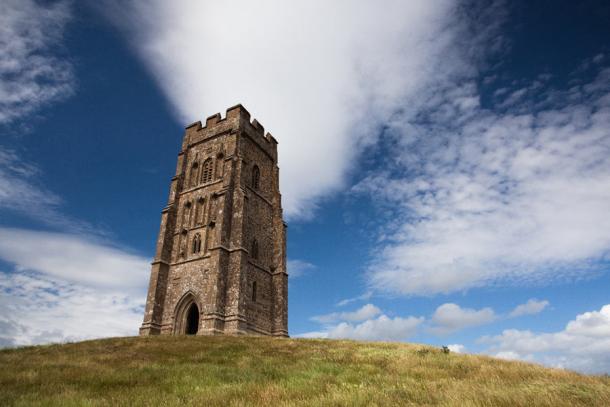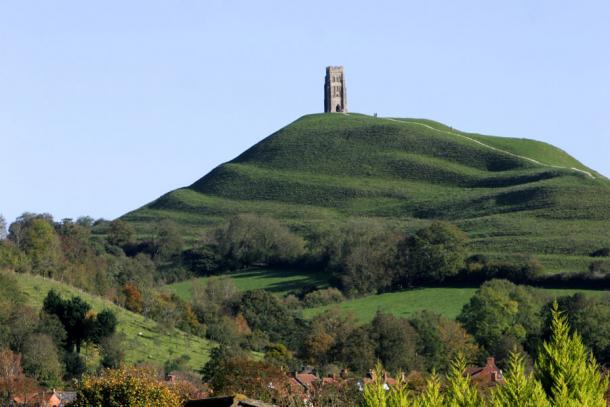
Glastonbury Tor: A mysterious British hill steeped in history and legends
 25. 03. 2022
25. 03. 2022

G is a small town in Somerset, England, where there is a very important hill known as Glastonbury tor (shortly Tor). At the top are the remains of a tower of St. Michael with a strange system of terraces on the sides. Legend has it that these terraces form maze with magical symbolism.
Tor It rises to an altitude of 158 meters and is clearly visible for many kilometers along with the tower. The hill originated from rocks dating back to the early Jurassic period. The low ground is known for creating a visual illusion known as Fata Morgana, where the hill appears to emerge from the fog. It occurs as a result of the bending of light rays as they pass through layers of air at different temperatures.
Rich history
Getting Neolithic flint tools from the top Tor revealed that this place has been visited since prehistoric times. Archaeological research shows that there was an Iron Age settlement around 300-200 BC. Roman pottery, 6th-century Mediterranean amphorae, a Saxon stick, medieval funerals and a smithy show the repopulation of the area around Tor over the centuries.

St Michael's Tower on top of Glastonbury Tor
Legends of Glastonbury Tor
There are many myths associated with Glastonbury Tor that date back thousands of years to characters like Joseph of Arimathea a King Arthur. Myths about Tor claims it was land of the dead, portal, magic mountain and glass hill among many others. One of the legends mentions that it was more than two thousand years ago Tor in the middle of the sea, which later became a lake. Old celtic name Toru was according to this legend Glass island, known in Welsh as Ynys Guthrin. During the Roman Empire, there was mention of Tor as an island. At this time, the plain was flooded and the island became a peninsula at low tide.
Avalon, the meeting place of the dead
One legend refers to the place as Avalon Tor and connects him with Avalon of Arthurian legend. 12th century historian Gerald of Wales told about the finding of coffins King Arthur a Queen Guinevery in 1191, which were later relocated. Myths say that Avalon was a meeting place for the dead and that Tor was the home of the Lord of the Underworld. In these legends, Tor is the gateway to the land of the dead (Avalon).
Holy Grail
There is also a Christian legend that Joseph of Arimathea brought the young Jesus to Glastonbury Tor. When Joseph came to England, he was said to have founded the first Anglican Church in Glastonbury. According to archaeological studies, she really could in Glastonbury there exists a very early Christian church. Another Christian legend claims that the Holy Grail is buried in Glastonbury. Author Christopher Hodapp claims that Tor is one of the possible locations of the Grail due to its close proximity to the monastery he was hiding Nanteos Cup, a wooden bowl that is believed to offer supernatural healing abilities, allegedly because it was made from a piece of Truth.
Mystery terraces
The sides of the Tor have seven deep, roughly symmetrical terraces, the origins of which remain a mystery to this day. One explanation is that they were made in the Middle Ages to facilitate crop plowing. However, this has been largely refuted because the terracing is also on the north side, which would bring little benefit. Another explanation includes the construction of defensive ramparts, which can be connected to Ponter's Ball Dyke, a linear earthworks about 1,6 km east of Tor. Some historians have alternatively suggested that they were remains spiral sidewalk or a labyrinth created for pilgrims to reach the top. The terraces that encircle Tor seven times led the pilgrim to St. Michael's Church.

Glastonbury Tor terraced slope
Glastonbury is immersed in extremely interesting mythology and fascinating legends and is a very special place worth visiting.
Eshop

Joseph Davidovits: The New History of the Pyramids or the Shocking Truth About the Construction of the Pyramids
 12.03.2022
12.03.2022

 01.01.1970
01.01.1970

Philip Coppens: Evidence of the presence of aliens on the ground
 12.03.2022
12.03.2022





 1
1